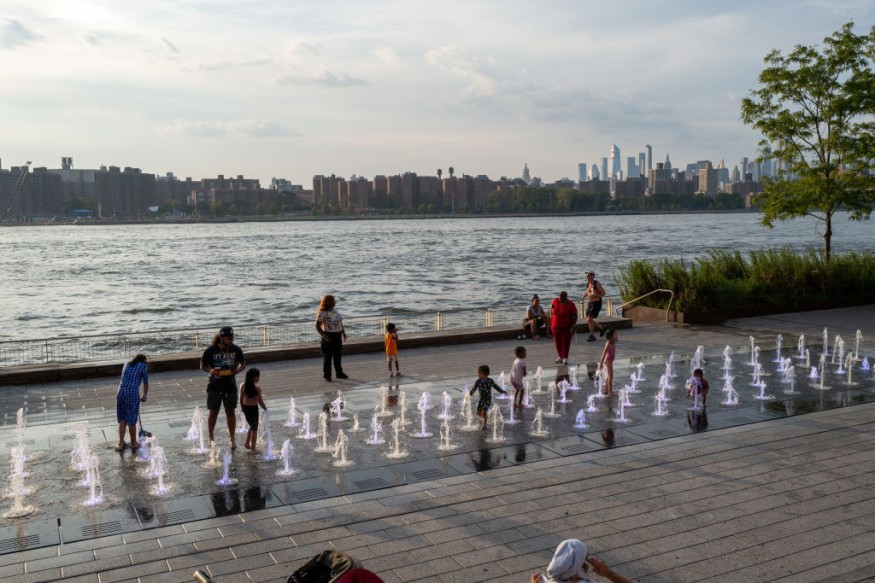
A flurry of severe thunderstorms that will sweep from the Midwest to the Northeast of the US might start the much-anticipated fall season.
Much of the United States has been expecting the fall season to arrive, however, Mother Nature had other plans with the prolonged heat that has been lingering in the region. Now, according to meteorologists, rounds of thunderstorms, some of which will be severe, will reduce the heat and usher in fall-like conditions.
The first few days of September have been no exception to the central Plains' ongoing trend of oppressive heat.
Relentless and Prolonged Heat
A new day-high temperature record was achieved in Minneapolis on Sunday as the temperature soared to 98 degrees Fahrenheit. Early September highs have historically ranged between 77 and 80 degrees Fahrenheit. In Omaha, Nebraska, the first four days of September saw highs that were above 90 F, which is 7.5 F above average historically.
Looks like summer is still hanging on in the Northeast! 🥵 pic.twitter.com/zCDAl7WTWw
— AccuWeather (@accuweather) September 5, 2023
According to forecasters, a powerful storm that would produce multiple rounds of thunderstorms may finally put an end to the wave of unusually high temperatures across the northern tier.
Over 8 degrees beyond the historical average for the first of September, temperatures have been recorded in Chicago. When the high temperature hit 90 degrees for the third day in a row on Tuesday, the early-September hot spell was formally dubbed a heat wave. But after the thunderstorms on Wednesday, the temperatures will plummet.
A Potent Storm Brings Severe Thunderstorms
Drenching downpours moved in around 4 AM CDT on Wednesday, kicking off Chicago's wet weather, which resulted in flash flood warnings from the National Weather Service for the city and its southern and eastern suburbs as well as ground stops at Midway and O'Hare airports.
Another round of soaking, and possibly severe, thunderstorms are anticipated to develop throughout Wednesday. The storms will this time target areas to the east of Chicago.
On Wednesday evening, severe thunderstorms with the potential for hail and damaging winds are expected from central Michigan through western Tennessee, northern Mississippi, and southern Arkansas.
Compared to intense downpours, the effects of this extreme weather may be more limited, according to AccuWeather Senior Meteorologist Matt Benz.
Fall-Like Temperature
Severe weather aside, a significant shift in air mass promises a welcomed break from the scorching heat. Cities like Minneapolis and Madison, Wisconsin, are forecasted to experience highs in the 60s by Wednesday, while Chicago and Indianapolis, Indiana, should see lower 70s by Thursday. This temperature drop of 20-30 degrees offers much-needed relief from earlier extreme heat.
Although temperatures may rise slightly later in the week or over the weekend, they won't reach the same extreme levels seen earlier this month. Instead, they'll hover near or slightly below historical averages for mid-September. However, the Northeast will have to wait a bit longer for its heat relief as thunderstorms temporarily shift the heat eastward.
Unusual September
New York City residents are experiencing an unusual September with temperatures staying below 90 degrees Fahrenheit, despite having hot spells in July. However, this may change as a late-summer heat wave is expected this week, followed by wet and humid conditions. Thunderstorms, fueled by heat and moisture from the Eastern Seaboard, could bring damaging winds from Canada to Virginia, affecting major cities like Ottawa, Buffalo, New York, and Washington, D.C.
The slow progression of storms could lead to prolonged heavy rainfall, increasing the risk of flash flooding. Eastern Seaboard cities can expect wet weather by late Thursday or Friday, with temperatures potentially reaching around 100 F. The Northeast faces a weekend filled with rain and thunderstorms.
Related Article : Labor Day Sees 72,000 Stranded in Burning Man Festival Flood
© 2025 NatureWorldNews.com All rights reserved. Do not reproduce without permission.





